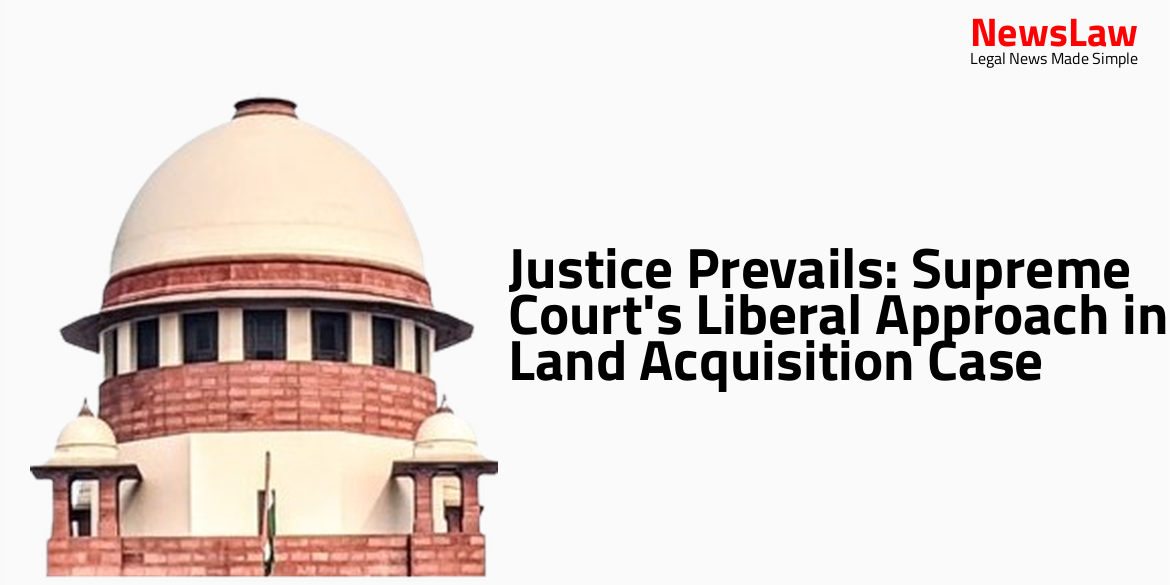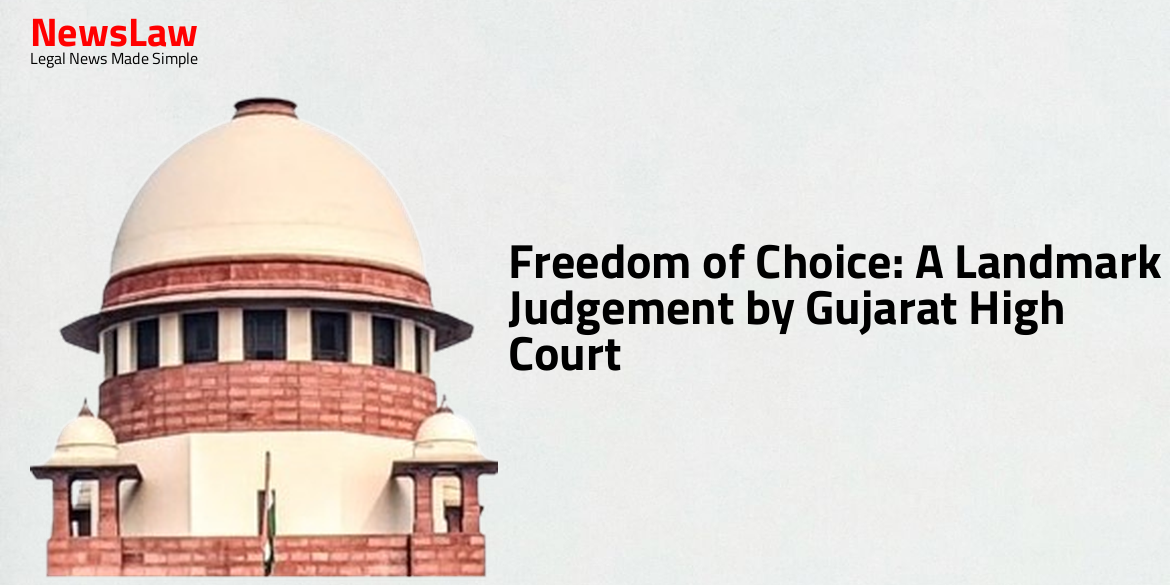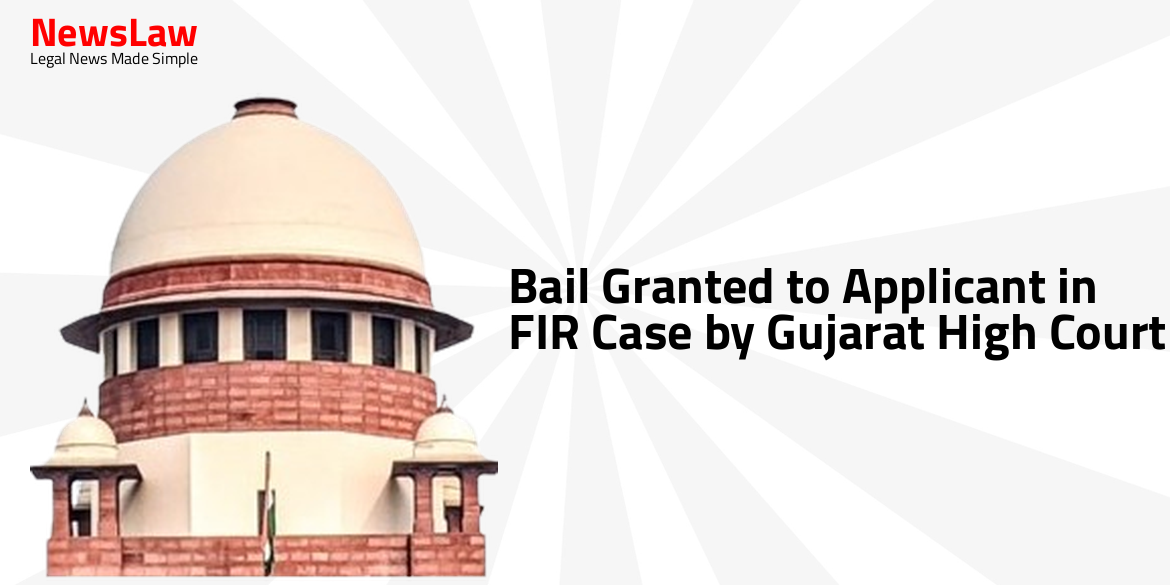In a significant ruling, the Gujarat High Court has set aside the detention order dated 20.01.2024 in the case involving
Facts
- The present petition is challenging the order of detention dated 20.01.2024 passed by the detaining authority under Section 3(1) of the Gujarat Prevention of Anti-Social Activities Act, 1985.
- The petitioner is defined as detenue under Section 2(b) of the Act in this case.
- The detenue is represented by an advocate in the proceedings against the State.
- The detention order was issued based on powers conferred by the Act to prevent anti-social activities.
- The legality and validity of the detention order are being questioned in this case.
Arguments
- The petitioner’s advocate argues that the detention order should be quashed as it is solely based on the registration of five FIRs under the Prohibition Act, which does not fall under the definition of the Act.
- The advocate further contends that the alleged illegal activities do not have a nexus with public order but can be categorized as a breach of law and order.
- There is lack of relevant material apart from witness statements and FIRs to prove that the petitioner’s actions disturb public order.
- The advocate asserts that the petitioner’s activities do not pose a threat to the social fabric of society or the normal routine life of people at large.
- It is argued that the criminal cases against the petitioner do not disrupt the social apparatus to the extent of threatening the existence of a law-governed system.
- The advocate concludes that the detention order is not justified based on the facts of the case.
- ARG_RESPONDENT argued that the evidence presented by the Petitioner was circumstantial and insufficient to prove their case.
- ARG_RESPONDENT highlighted inconsistencies in the witnesses’ testimonies to cast doubt on the Petitioner’s claims.
- ARG_RESPONDENT contended that the legal framework cited by the Petitioner was not applicable to the current case.
- ARG_RESPONDENT stressed that there was no direct evidence linking them to the alleged offense.
- ARG_RESPONDENT requested the court to dismiss the Petitioner’s case based on lack of concrete evidence.
Analysis
- At least ten detention orders under the Telangana Act of 1986 have been set aside by the High Court of Telangana in the last year alone.
- A District Magistrate can act under Rule 30(1)(b) to prevent subversion of public order, but not for maintenance of law and order under ordinary circumstances.
- For preventive detention to be justified, there must be material indicating that the individual poses a threat to society disturbing the public order substantially.
- Sheltering under preventive detention may not be the appropriate remedy in certain circumstances.
- Distinguishing between an act affecting law and order, public order, and security of the State is crucial.
- The detenu’s alleged offenses in the FIRs could be addressed through regular criminal law processes.
- If the detenu truly poses a significant threat as claimed, the State can seek bail cancellation or move an appeal to a Higher Court.
- Based on the available documents and materials, it is evident that the subjective satisfaction of the detaining authority may not be legally valid as the alleged offenses do not significantly impact public order as required by the law.
- The court has noted the routine and unjustified use of Preventive Detention Law in Telangana.
- Apart from general statements, there is no concrete evidence to show that the detenue’s actions have endangered public order.
- Distinction between disturbance to ‘law and order’ and disturbance to ‘public order’ settled by Constitution Bench in Dr. Ram Manohar Lohia vs. State of Bihar case.
- Public order comprehends disorders of less gravity than those affecting ‘security of State’ while ‘law and order’ comprehends disorders of less gravity than those affecting ‘public order.’
- Examples given to differentiate between disorder and public disorder, such as quarrel inside a house or street fight not constituting public disorder.
- Case law reference of Shaik Nazneen vs The State of Telangana highlighting the importance of personal liberty and non-application of mind in preventive detention.
- Case of Pushkar Mukherjee vs The State of West Bengal emphasizing the impact on the community or public at large to determine if an incident affects public order.
- Drawing a line between serious/aggravated forms of disorder and minor breaches of peace
- Serious/aggravated forms directly affect the community or public interest
- Minor breaches primarily injure specific individuals
- A disturbance affecting public order falls under the Preventive Detention Act
- Simplicitor registration of FIRs does not necessarily relate to breach of public order
Decision
- The petition is allowed and the order of detention dated 20.01.2024 is quashed and set aside.
- The detenue is ordered to be released immediately unless required in any other case.
- Direct service is permitted and no recourse under the Act is allowed due to lack of relevant material.
Case Title: ALPESH @ PAKIYO YASHVANTBHAI GOLE (MARATHI) Vs. STATE OF GUJARAT
Case Number: R/SCA/2715/2024



